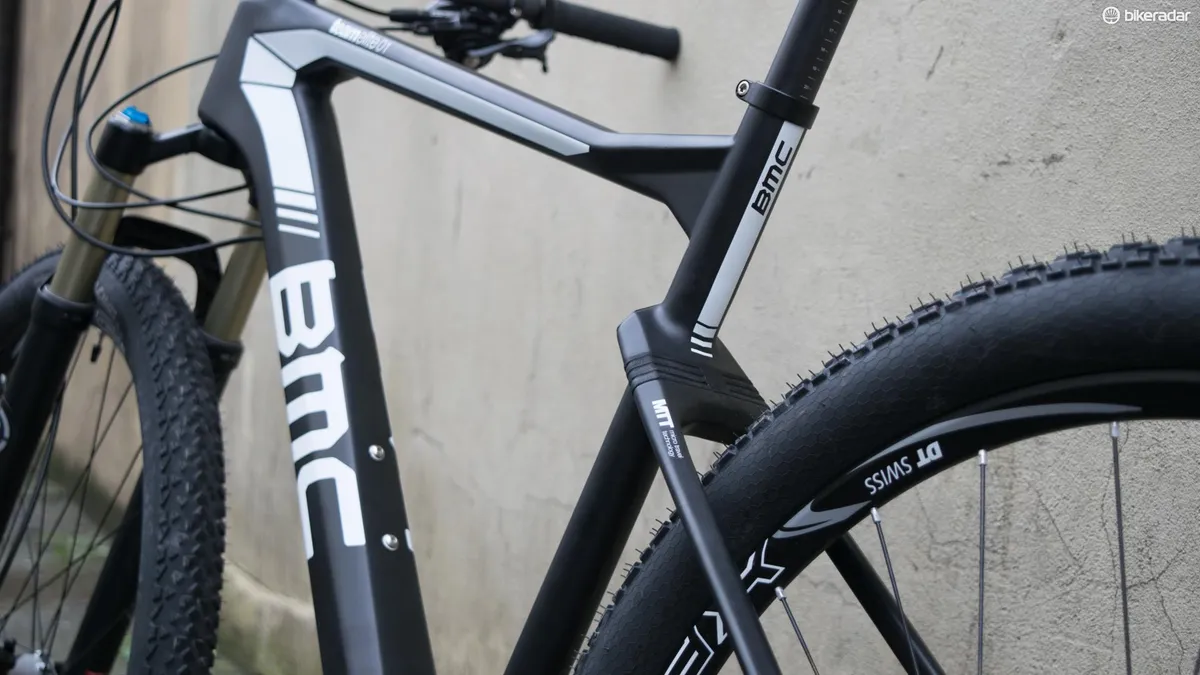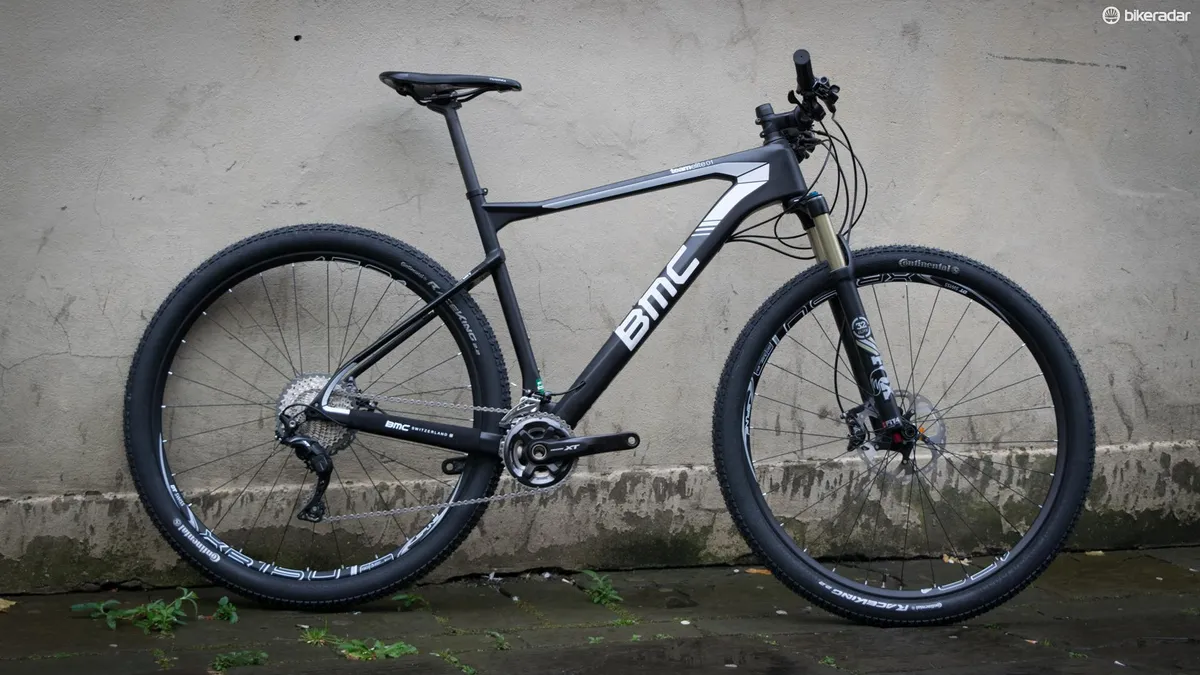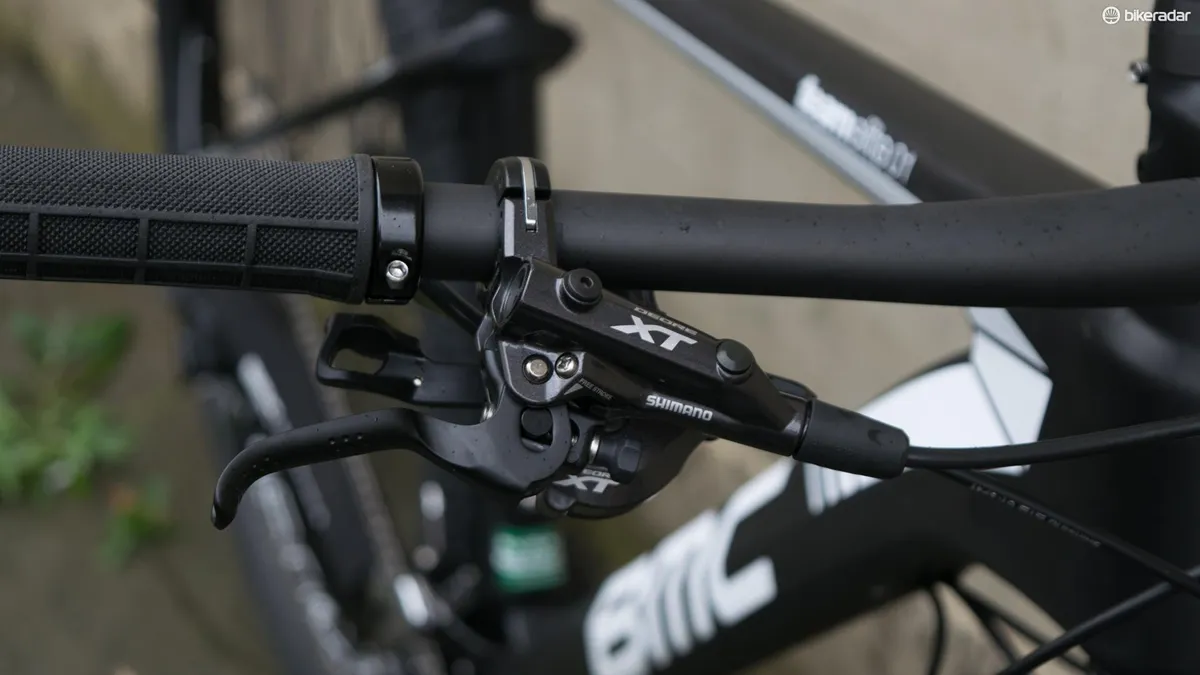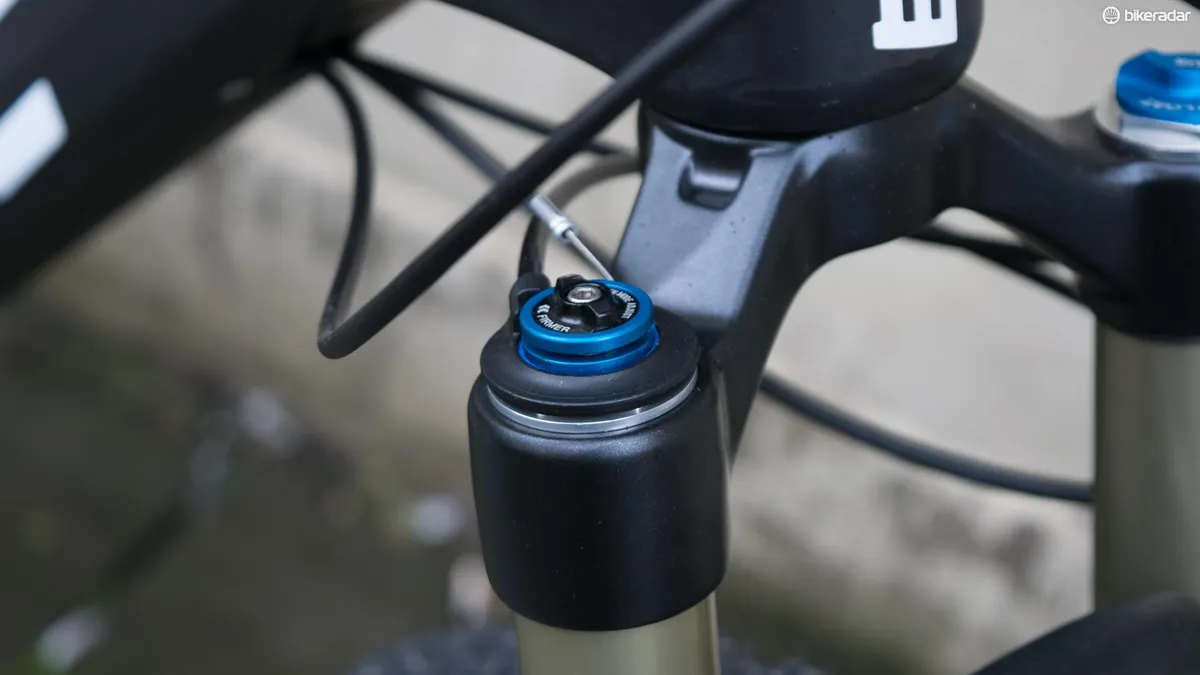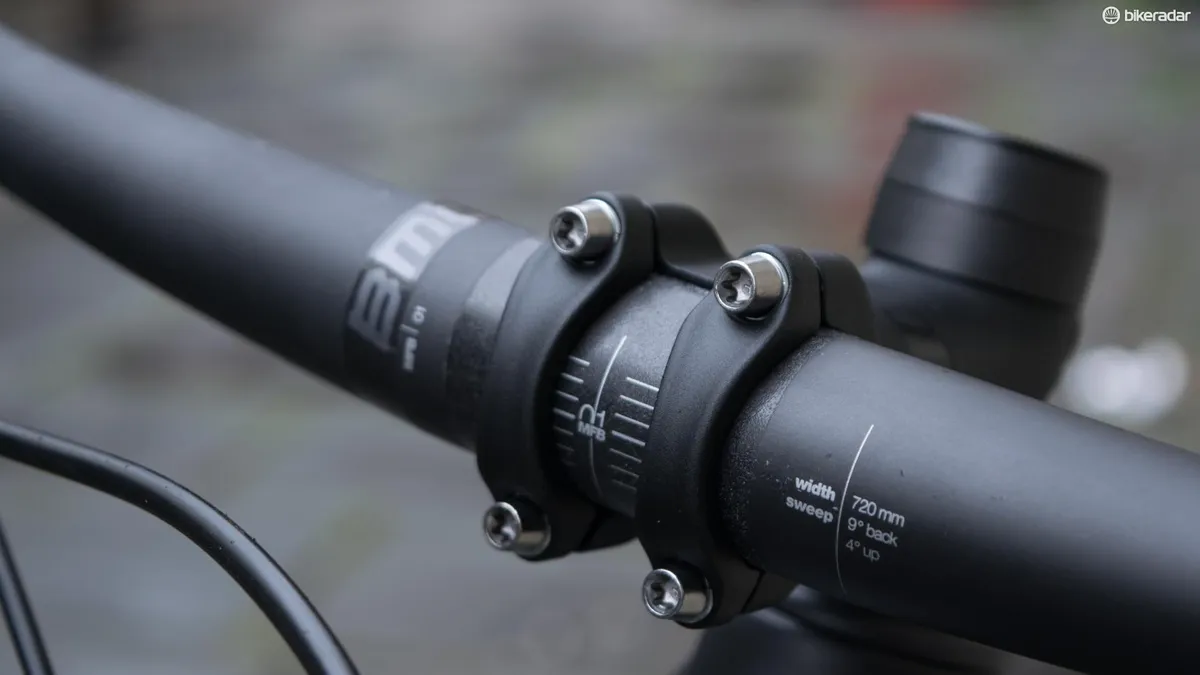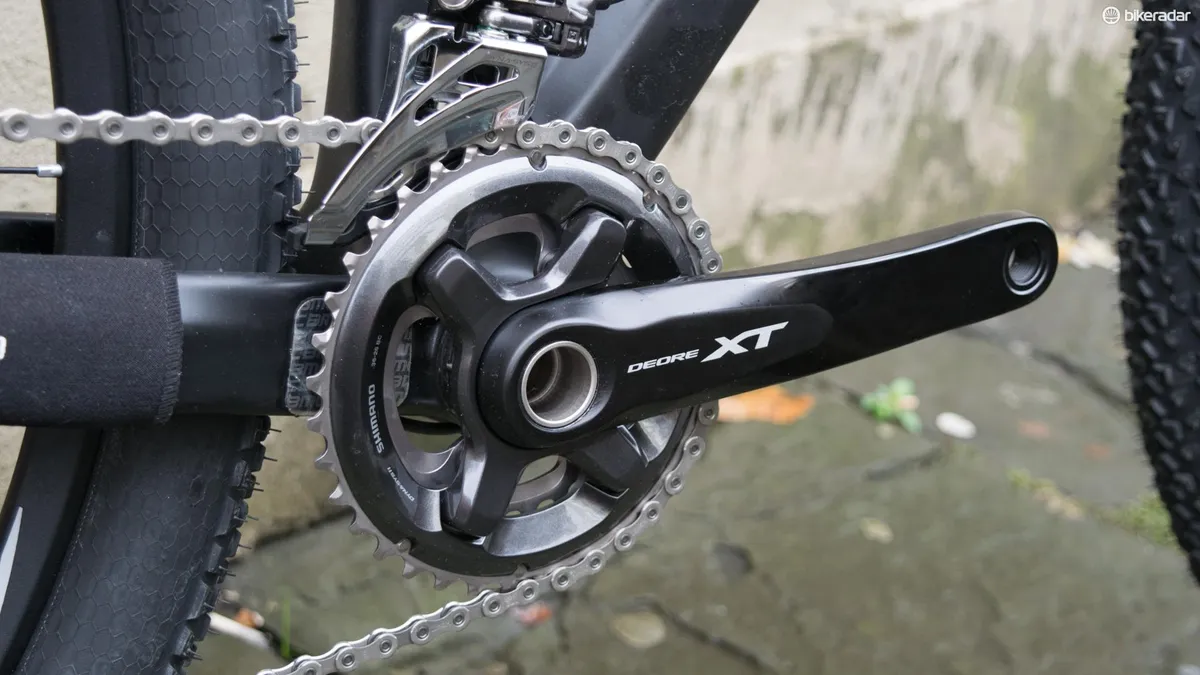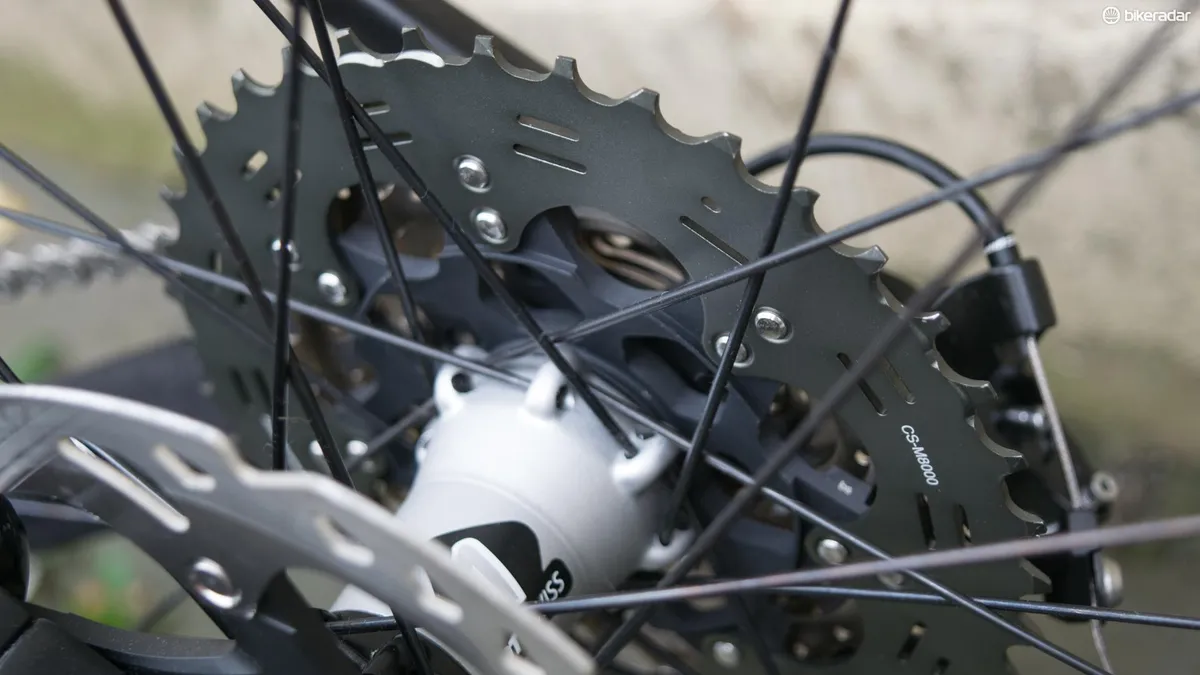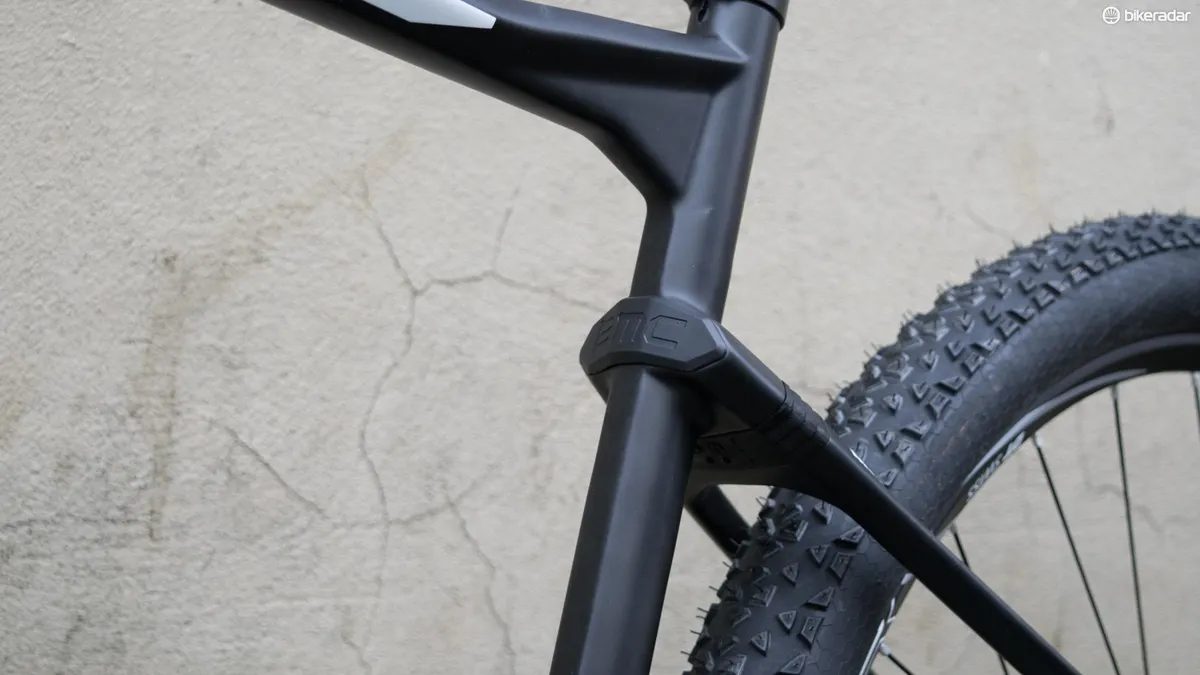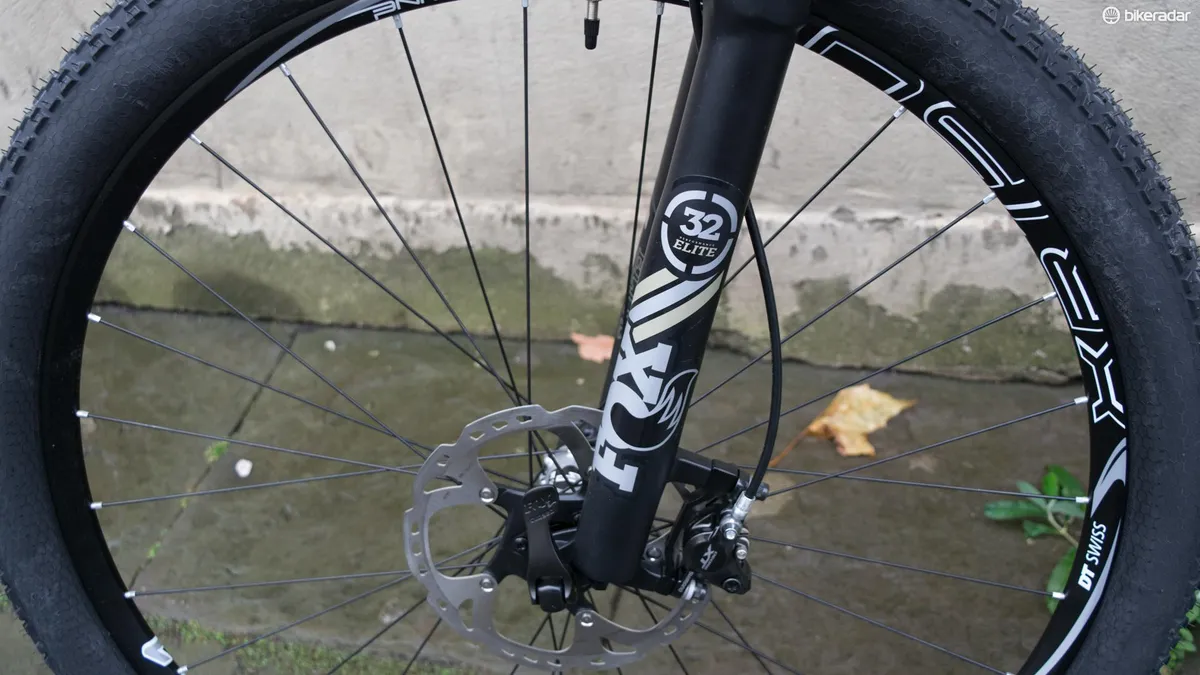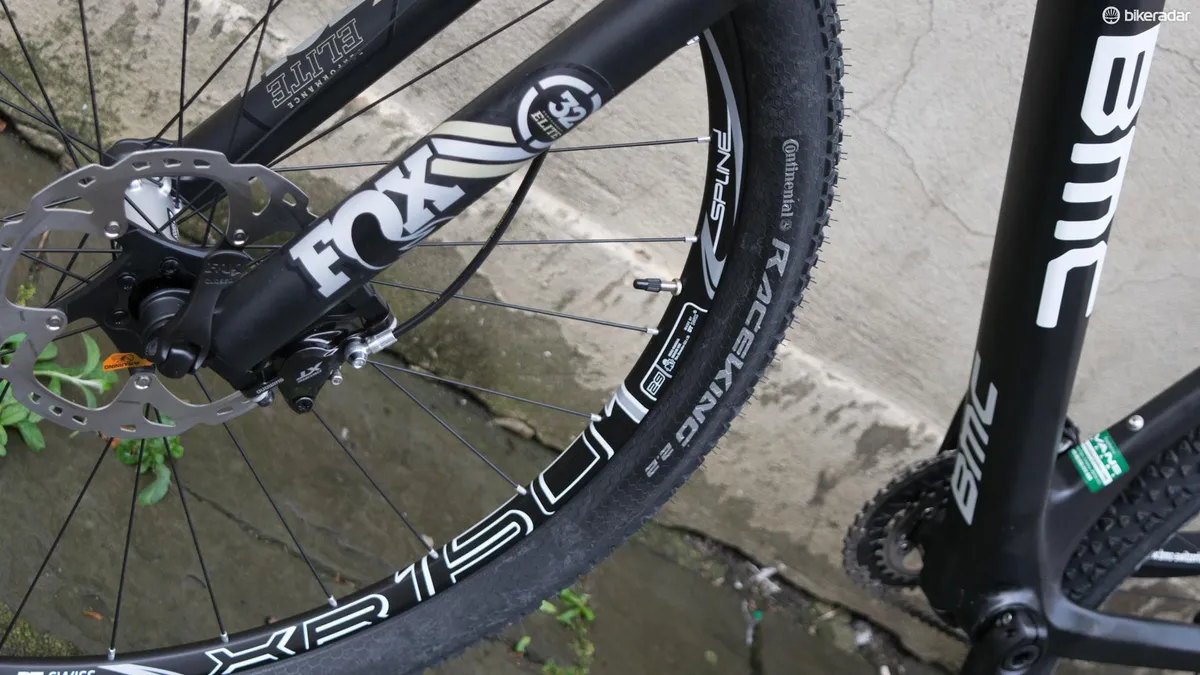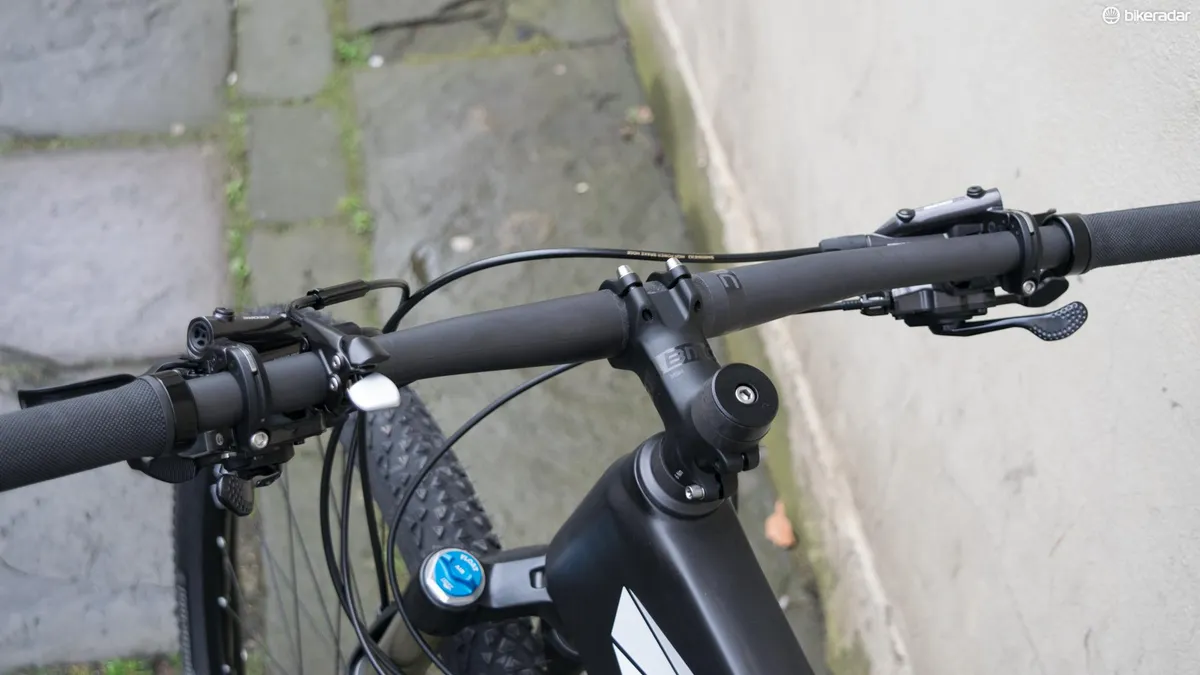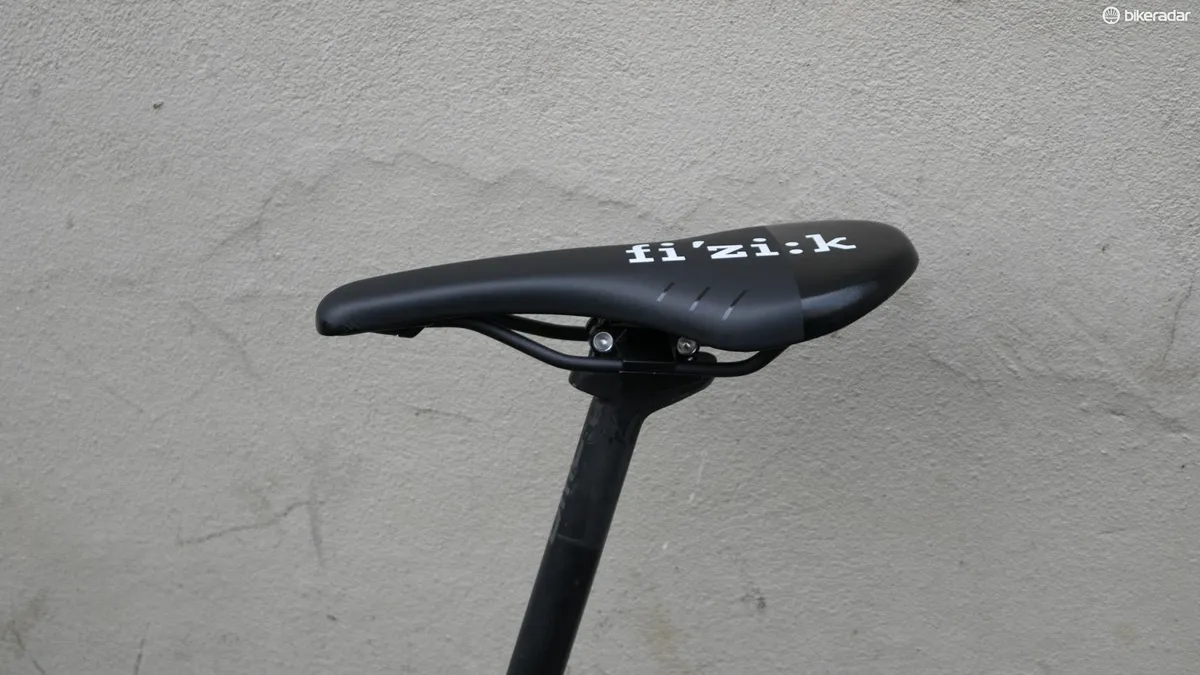The new Teamelite TE01 from BMC is one of the most interesting mountain bikes around at the moment and yet it’s really not that easy to see why. Check the side profile of the Teamelite 01 frame and you’ll find it’s nearly identical to that of the other carbon hardtails in BMC’s line-up.. Sorry did we say hardtail? Because that’s the thing, the Teamelite 01 is not a hardtail at all.
Related: BMC Teamelite 01 - first ride
Glance up to the junction between the seatstay and the seat tube of the carbon Teamelite and there’s a subtle component just before the seatstay bridge. This is actually an elastomer and one that adds up to 15mm of vertical travel at the rear wheel – enough to increase traction at the rear tyre, but not enough to require a pivot or to add a serious weight penalty over the regular hardtail.
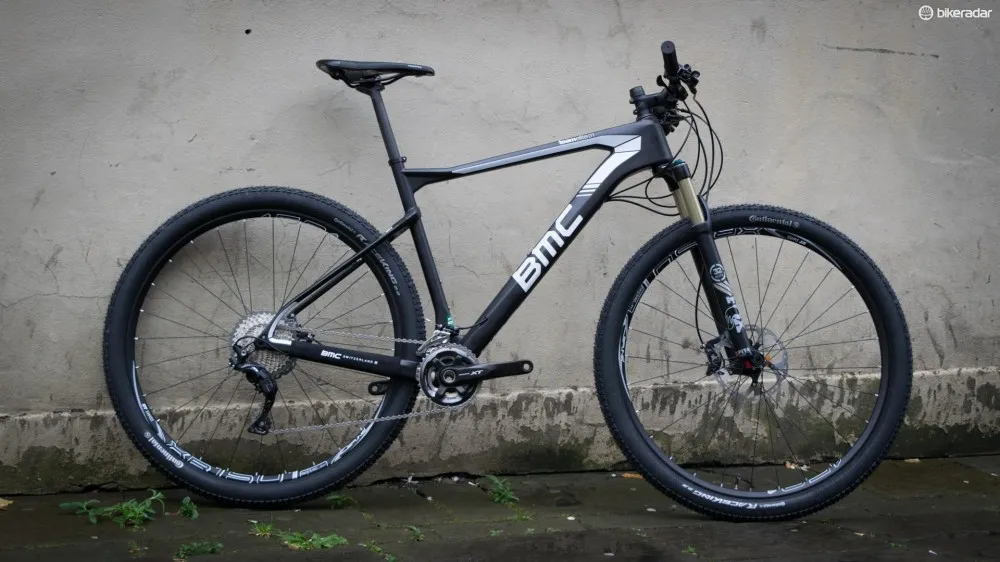
It's easy to mistake the Teamelite for its hardtail sibling
Of course this sort of technology is nothing new – many brands were doing exactly the same thing more than 20 years ago – but BMC obviously believes the softtail still deserves its place. BMC isn’t alone either, with Trek having migrated its seat tube-based-suspension system from its Domane road bike to the 2016 Procaliber SL on the muddy side.
So, what makes this different from the Trek? Well, positioning the elastomer at the seatstay of the BMC means that the rear suspension will remain active regardless of a rider’s position on the bike. That’s not the case for the Trek, which requires a rider’s weight to be on the saddle to open up its softer side. Once out of the saddle the Trek retains the riding characteristics of a regular hardtail, and so doesn’t boast of delivering additional traction like the BMC does.
The geometry of the Teamelite 01 is the same as that of its hardtail sisters, which itself remains unchanged from 2014 models. The introduction of a new XS size option is great news for the vertically challenged though. The regular Teamelite was considered remarkably compliant for a carbon race bike, partly down to its narrow diameter 27.2mm carbons seatpost, and that’s something that has stayed for the softtail version.
Up front the Teamelite gets a 100mm travel Fox 32 Float fork equipped with a remote lockout lever. Inside there’s a FIT4 damper, meaning three compression settings are quickly accessible: one click of the lower button on the handlebar lever and you’re in the medium compression setting, a second push and you’re in the firmest setting, while a click to the top button knocks the fork back into its default open setting. Compression in the open setting can also be adjusted to a rider’s preference via an adjuster at the top of the fork leg.
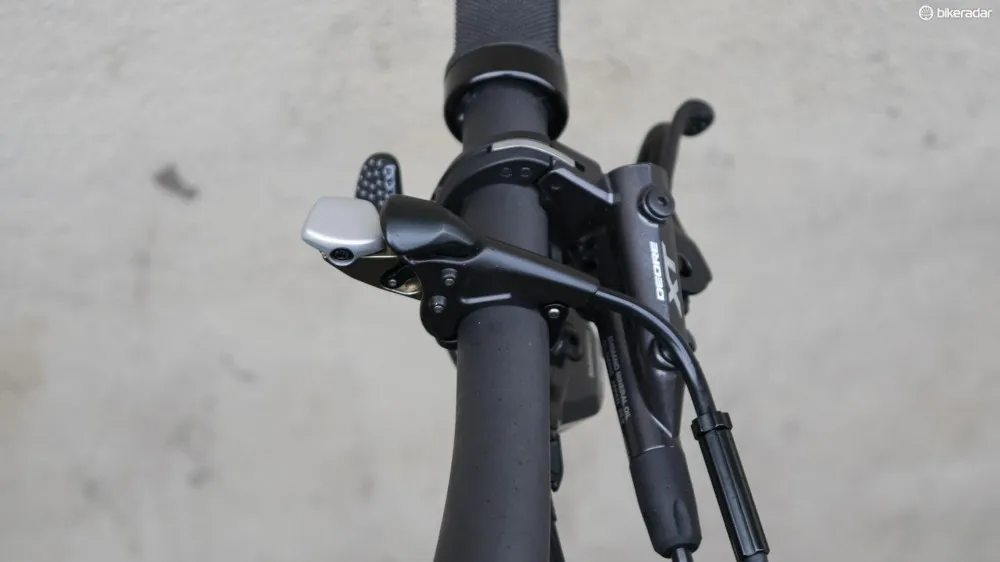
The Fox remote lockout lever puts three compression settings within a rider's fingertips
It’s worth mentioning at this point that we’ve had a go on this frame already, and have put together a detailed report on it; you can check that out here. Meanwhile, we’ll take a closer look at this test bike, which will be staying with us so for a long-term review.
Retailing for £3,499 / €4,399 / US$4,599 this XT-spec is the cheapest way to get your leg over a Teamelite 01 complete bike. It’s placed under two increasingly spendy models – one with SRAM’s one-by XX1 group (£4,699 / €5,999 / US6,599) and the last being a no expense spared option with carbon hoops and XTR Di2 (£7,500 / €9,999 / US$10,599). Thankfully, the big chunk taken out of your pocket is reflected in the overall weight of the bike, and our size large sample tipped the scales at just 23lbs (10.45kg).
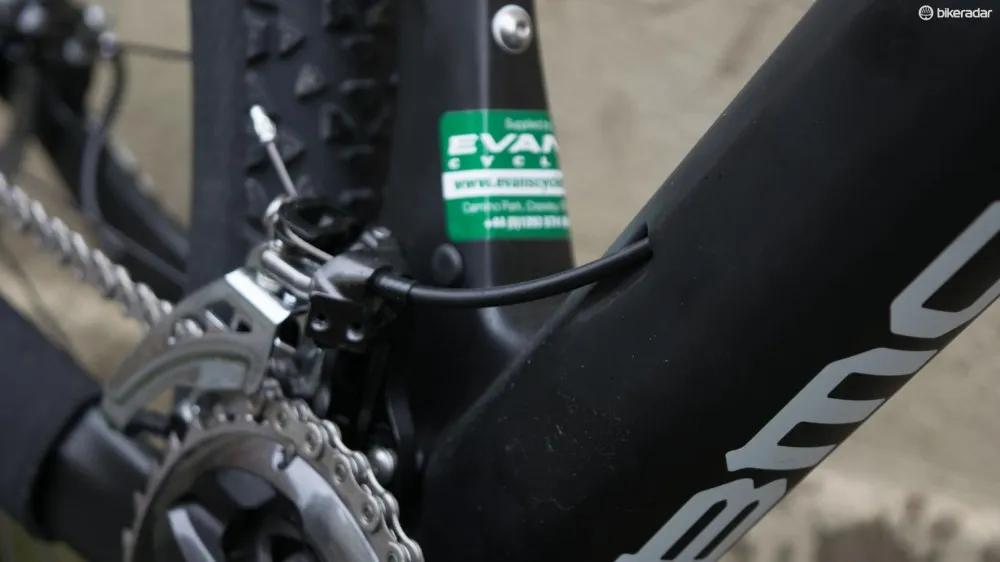
Internal cable routing is optimised around Shimano's excellent side-swing front derailleurs
BMC has opted to spec a double version of Shimano’s latest XT groupset, which pairs a 36/26t chainset with a wide range 11-40t cassette. It’s a configuration we are familiar with and have only been impressed with in the past. The frame’s internal cable routing has also been optimised to work with Shimano’s unique side-swing front derailleur and the result is a very clean look.
Related: Shimano XT M8000 first ride review
The new XT stoppers are also a safe bet and their latest generation i-spec clamps provide genuinely useful ergonomic adjustment along with tidy integration at the bar.
The Teamelite rolls on lightweight and tubeless-ready alloy hoops, namely 29in XR1501 Spline wheels from DT Swiss. These are wrapped in 2.2in Continental Cross King rubber. The own brand finishing kit is particularly nice, with a 720mm carbon handlebar and sensibly sized stem as standard.
It’ll be interesting to see how this bike performs in the long run, and whether other softtail competition will arrive in 2016. Meanwhile, we can’t help but think about how this technology could tie in with BMC’s next GranFondo road bike…
